Current status of each field in the Korean publishing market
⑫ Publications of Children’s Books/Teenage Books
2021.01.04
 One of the most active publishing areas in almost any country is children’s books. Many of the children’s books in Korea (for preschoolers and elementary schoolers) have long been focused on education, learning, or cognitive development for its expected roles. However, they are undergoing evolution today as a tool for delivering necessary knowledge and wisdom for kids to actively cope with the world while nurturing their boundless imagination with entertaining elements. Meanwhile, the publishing market for teenagers, which is relatively smaller than children’s books in terms of titles and size, is growing its influence in the market with more various and absorbing topics, not to mention the facilitation of reading education conducted in schools. The teen market is breaking out of the narrow frame of a “generation stuck between child and adult categories”.
One of the most active publishing areas in almost any country is children’s books. Many of the children’s books in Korea (for preschoolers and elementary schoolers) have long been focused on education, learning, or cognitive development for its expected roles. However, they are undergoing evolution today as a tool for delivering necessary knowledge and wisdom for kids to actively cope with the world while nurturing their boundless imagination with entertaining elements. Meanwhile, the publishing market for teenagers, which is relatively smaller than children’s books in terms of titles and size, is growing its influence in the market with more various and absorbing topics, not to mention the facilitation of reading education conducted in schools. The teen market is breaking out of the narrow frame of a “generation stuck between child and adult categories”.
Children’s books in Korea are evolving as a medium that carries knowledge and wisdom along with boundless room for imagination and entertaining elements.
According to the publishing trend in the second half of 2019 released by the Publication Industry Promotion Agency of Korea (KPIPA), 7,337 titles of children’s books were published in 2019. Among them, 2,863 titles were for preschoolers, and 4,474 were for kids. Compared to the number of titles published in 2015, preschoolers’ books are on the rise while those for children are dropping. Their share among the entire new titles fell to 9.0% in 2019 from 12.6% in 2015. This could have been due to the fall in readership, but the bigger cause seems to be the much greater increase in the publication of adults’ books.
According to the sales statistics of each field announced by Yes 24, one of the biggest online bookstores in Korea, in 2019, children’s books accounted for 15.7% (5.6% for preschoolers and 10.1% for children) while teenage books took 2.1% among the entire sales, showing more than a seven-fold difference. Also, in the sales data of Kyobo Bookstore, a representative online and offline bookstore nationwide, children’s books accounted for 5.6% of entire sales while it was 8.5% for kids’ books (it was 14.1% when considering the entire children’s book categories). In the first half of this year, when COVID-19 began to spread, sales of children’s books in Kyobo Bookstore increased by 22.5% year on year, where preschoolers’ books saw a 4.1% increase. The major driver behind this upcurve is analyzed to be the rise in the direct purchase of books from bookstores as public and school libraries closed frequently while classes were held online. It was also an exceptional case for <Common Siblings (I-Seum)>, a comic for children, to take first place on the bestsellers’ list of Kyobo Bookstore in the first half of 2020.
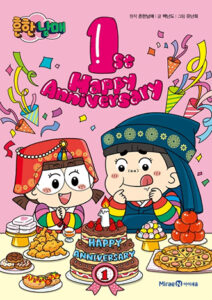
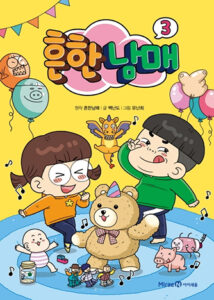
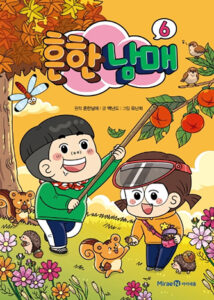
<Common Siblings> series
As such, books for teenagers are small in the number of titles and sales compared to children’s books, and their influence in the publishing market is small, as can be seen from the fact that there is no bestsellers’ list for teenage books. The proportion of publishers specialized in teen books also shows the current status. According to the survey on the publishing industry in 2019, while there were 7.0% of publishers specialized in children’s books, there were only 1.5% of publishers that focused on teen books (excluding school reference books). This is because as the adolescent period in Korea (mainly 6 years of middle and high school) is regarded as a period in which students focus on studying major subjects and prepare for college entrance, teen readers don’t have time to read many general books other than educational materials.
The recent performance of children’s and teen books was highly influenced by a school program called “one book for each semester” that was launched in 2018 for all elementary, middle, and high schools across the country. This program encourages students to read general books other than textbooks during the Korean language class and write reviews, which has eventually contributed to the facilitation of the publishing market alongside building a reading habit for students.

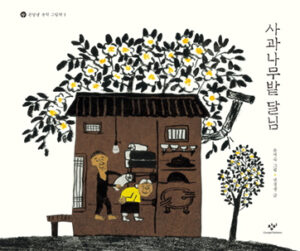
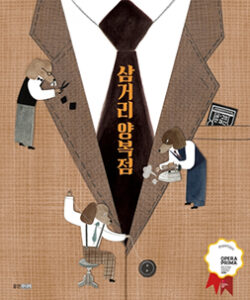
<Wall>, <The Moon Over the Apple Orchard>, <An Old Tailer Shop at Intersection>
In the children’s book market, more writers are becoming globally prominent, and Korean writers are winning the Bologna Ragazzi Award at the Bologna Children’s Book Fair almost every year. For example, in 2018, <Tree, Dancing (Kinderland – Bandal)> by Bae Yoo-Jung won the grand prize for the New Horizons category at the Bologna Ragazzi Award, and <Wall (BIR)> by Jung Jin-Ho and <WHO ARE YOU? (Kinderland – Bandal)> by Ahn Hyo-Rim were also honored with an award. Adding good news, in the following year, <The Moon Over the Apple Orchard (Changbi)> by Yoon Mi-Sook and <A Shadow (Kinderland – Bandal)> by Chae Seung-Yeon had the glory of winning an award. The award-winning work in 2020 was <An Old Tailor Shop at Intersection (Woongjin Junior)> by Ahn Jae-Seon.
In March this year, the “Baek Hee-Na” boom arose as she was announced as the winner of the Astrid Lindgren Memorial Award, which is referred to as the Nobel Prize for children’s books, for the first time in Korea. Her seven best works include <Cloud Bread (Hansol Education – Hansol Subook)>, <Magic Candies (Bear Books)>, and <The Bath Fairy (Bear Books)>, <I Am a Dog (Bear Books)> topped the list of bestsellers for toddlers. Other titles on the list included translated works such as <Big Apple, Bump! (Borim)> by Hiroshi, <I Love You Through and Through (Prooni Books – Treasure Box)> by Bernadette Rossetti Shustak, and <Frozen (Applebee)> by Suzanne Francis and domestic works such as <The 100 Great Men Who Brightened Korea (I-Human)> by Seol Min-Seok, a popular history lecturer in Korea, <We’ll Always Be Together Again (Wisdom House)>, by Yoon Yeo-Rim, <The Battle of Tooth Kingdom (Sangsang Box)>, by Lee So-Eul, and <What If I Get It Wrong?> by Kim Young-Jin.
* <K-Book Trends> Vol. 26 – Interview with writer Baek Hee-Na
For children’s books, imported titles such as the <Mystery Genius Butt Detective (I-Seum)> series and <The 117-Storey Treehouse (Sigong Junior)>, the newest volume of the “The 13-Storey Treehouse” series full of imagination have been popular, while creative books by Korean authors have been showing a gradual upcurve. Meanwhile, children’s books such as <The Dictionary of a Nine-Year-Old’s Heart (Changbi)>, a warm and humorous children’s poetry collection by Park Sung-Woo, <Your Brain Rocks! Brain Explorers! Unlock the Secret (Owl Book)>, by Jung Jae-Seung with a sub-title “humans have a bad memory,” <Rice Cake Shop for Man-Bok (BIR)> by Kim Ri-Ri, <Wanini the Green Lioness (Changbi)> by Lee Hyeon, <A Strange Toilet (Book Mentor)> by Park Hyeon-Sook, <The No-Lose Toy Egg Vending Machine (BIR)> by Gwak Yoo-Jin, and <Moonlit Restaurant (BIR)> by Lee Bun-Hee. Also, for the “tasty learning” series produced by publisher Blue Garden, <Quiz for Children>, <Proverbs for Children>, <Four Chracter Idioms that Children Can Learn and Use Immediately>, <English Vocabulary for Children>, and <Grammar for Children> where “children can learn and use immediately” have been all popular. The support behind such good performance was comprehensive and remarkable editing skills that satisfied the curiosity of children readers and met the educational expectation of parents.
Even though teen books account for a small proportion of the entire market, they are growing in influence with various and absorbing topics and the facilitation of reading education in schools.
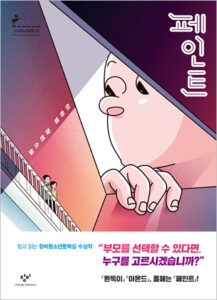
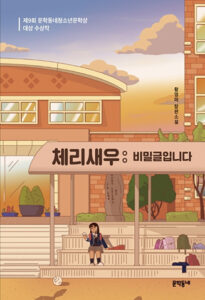
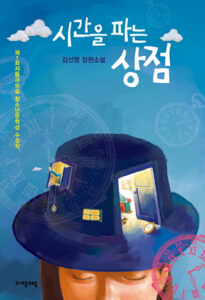
<Par-Int>, <Cherry Shrimp: Private Post>, <The Shop That Sells Time>
Teen literature is at the forefront of teen books in Korea. The characteristic of this field is that the market is formed around winners of literary awards for teenage books hosted by major publishers. For example, <Par-Int> is a winner of the Changbi Prize for Young Adult Fiction written by Lee Hee-Young that asks the meaning of good parents and family. Also, <Cherry Shrimp: Private Post> by Hwang Young-Mi is a winner of the Munhakdongne Award for Young People’s Literature that encourages teens to live as who they are without concealing or disguising themselves as others and setting the school as the main background. Meanwhile, <A Shop That Sells Time> by Kim Sun-Young, who won the Jamobook Award for Young Adult Literature in 2011, interprets the duality of time, which can be perceived as a difficult topic and has been a popular book for almost 10 years. Also, <Almonds> by Sohn Won-Pyung is a coming-of-age novel about a boy that is unable to feel emotions. Winning the Changbi Prize for Young Adult Fiction, it was highly appraised by overseas readers, including Japan. Other well-known works among teen novels are <I Will Cross Time For You (Munhakdongne)>, by Lee Kkotnim, <The Giver (BIR)>, an SF masterpiece by Lois Lowry who won the Newbery Medal, and <Wizard Bakery (Changbi)> by Koo Byung-Mo who came to the center of attention with his effervescent imagination that goes beyond the limits of coming-of-age novels.
In the field of history books for teenagers, the “History Inside Necessities of Life (Changbi)” series by Lee Young-Sook have been drawing popularity. Among the series, <The World History on My Dinner Table> takes familiar food ingredients such as pepper as the trigger for the journey into world history. It won the Changbi Prize for Young Adult Books for liberal arts. Also, following <World History in My Closet>, <World History Under The Roof> kindly explains interesting world history related to several spaces at home such as the study, attic, and bathroom. Moreover, <Infectious Diseases That Changed The World (Darun)> by Ye Byung-Il, which is in the spotlight amidst the persisting pandemic, is about the survival of human beings against germs and viruses. Also, <World Geography Connects Societies (Sakyejul)>, a two-volume series by the Geography Teachers’ Association of Korea, is widely sought by schools with recommendations from history teachers.
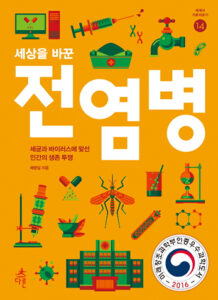

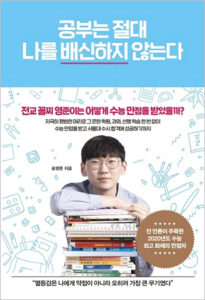
<Infectious Diseases That Changed The World>, <Conversation Starters: Sports>, <Studying Never Betrays You>
In the fields of art and culture, <Conversation Starters: Sports (Chulsoo & Younghee)> by Tak Min-Hyuk and Kim Yoon-Jin, <There Is No Same Red (Changbi)> by Kim Kyung-Seo that guides readers into the world of art, and <Answers to Eight Questions About History of Art (Woori School)> by Kim Jin-Yeop are some of the popular books read by readers, along with other liberal arts titles for teenagers about movies, music, or photography that are actively being published. Meanwhile, in the areas of mathematics and science, newly published <A Whole New Approach Towards Mathematics (Book 21)> by professor Choi Young-Ki of Mathematics Education at Seoul National University helps easy understanding of several mathematical concepts. Jung Jae-Seung’s <Science Concert (Across)> that had issued its second revised and enlarged edition in 20 years settling as the representative science book for the public ever since its first publication in 2001 meets teenagers with a sub-title “providing straight answers in the complex world.”
Books about “how to study,” which is probably the biggest pain in the neck for teens and parents in Korea, have been witnessing a steady growth in sales, forming a separate genre for itself. These books revolve around providing studying tips from well-known study mentors. For example, <The Moment You Fall in Love with Learning (Dasan Books)> by Park Sung-Hyuk has published a special edition in 2020, marking 100,000 copies sold since its first print in 2015. It explains the nature of studying and the fun you can find within it from the viewpoint of teenagers. Also, <Studying Never Betrays You (Maven)> by Song Young-Joon shares his miraculous experience of getting a perfect score at the national college entrance exam where he used to have the lowest score at school. On top of these, popular books in this field include <Kang Sung-Tae’s 66-Day Studying (Dasan Edu)> that introduces 33 studying habits and <Study Code 3.0 (The Nan Edu)> by Cho Nam-Ho who talks about how students at Seoul National University study.
Written by Baek Won-Keun (President of the Books & Society Research Institute)












